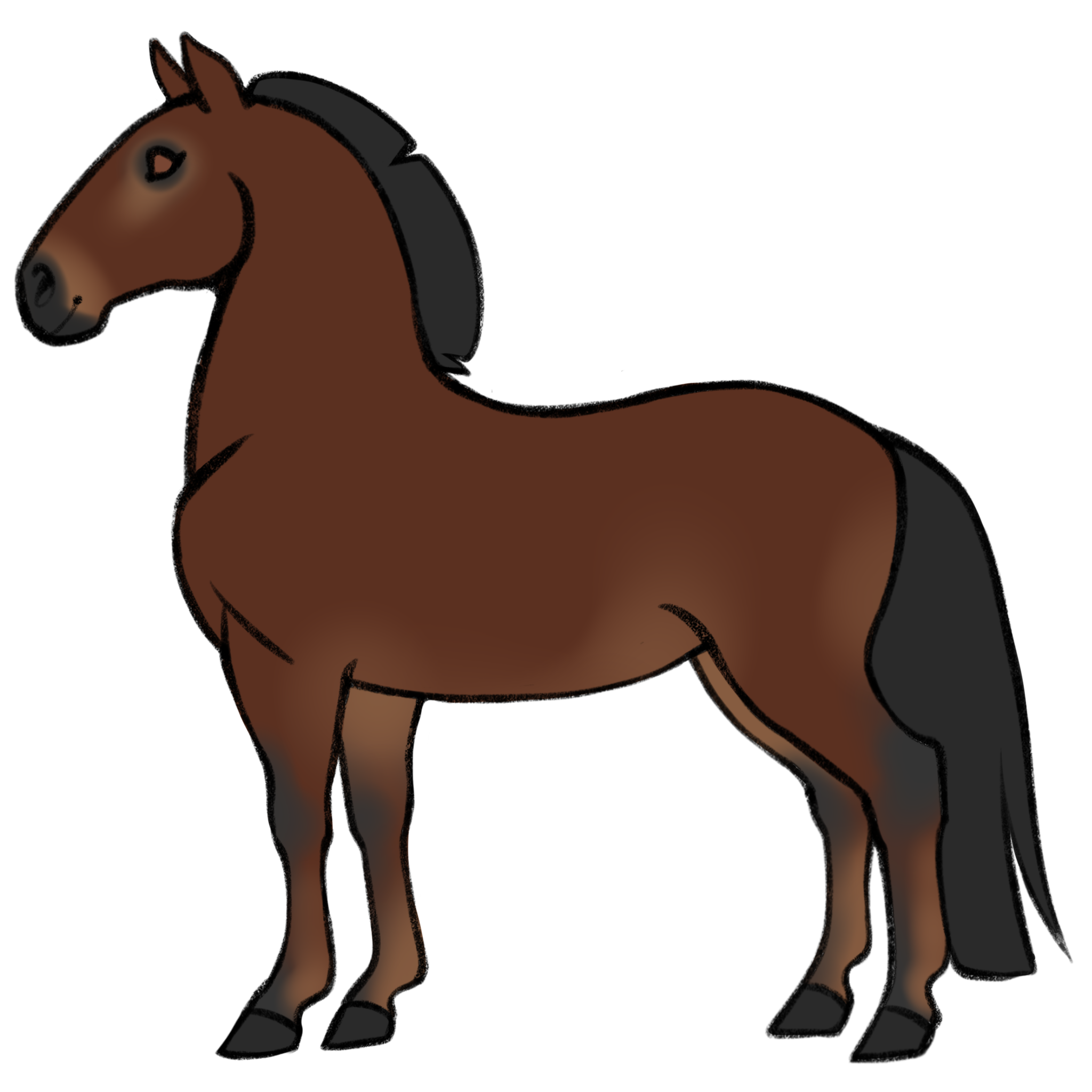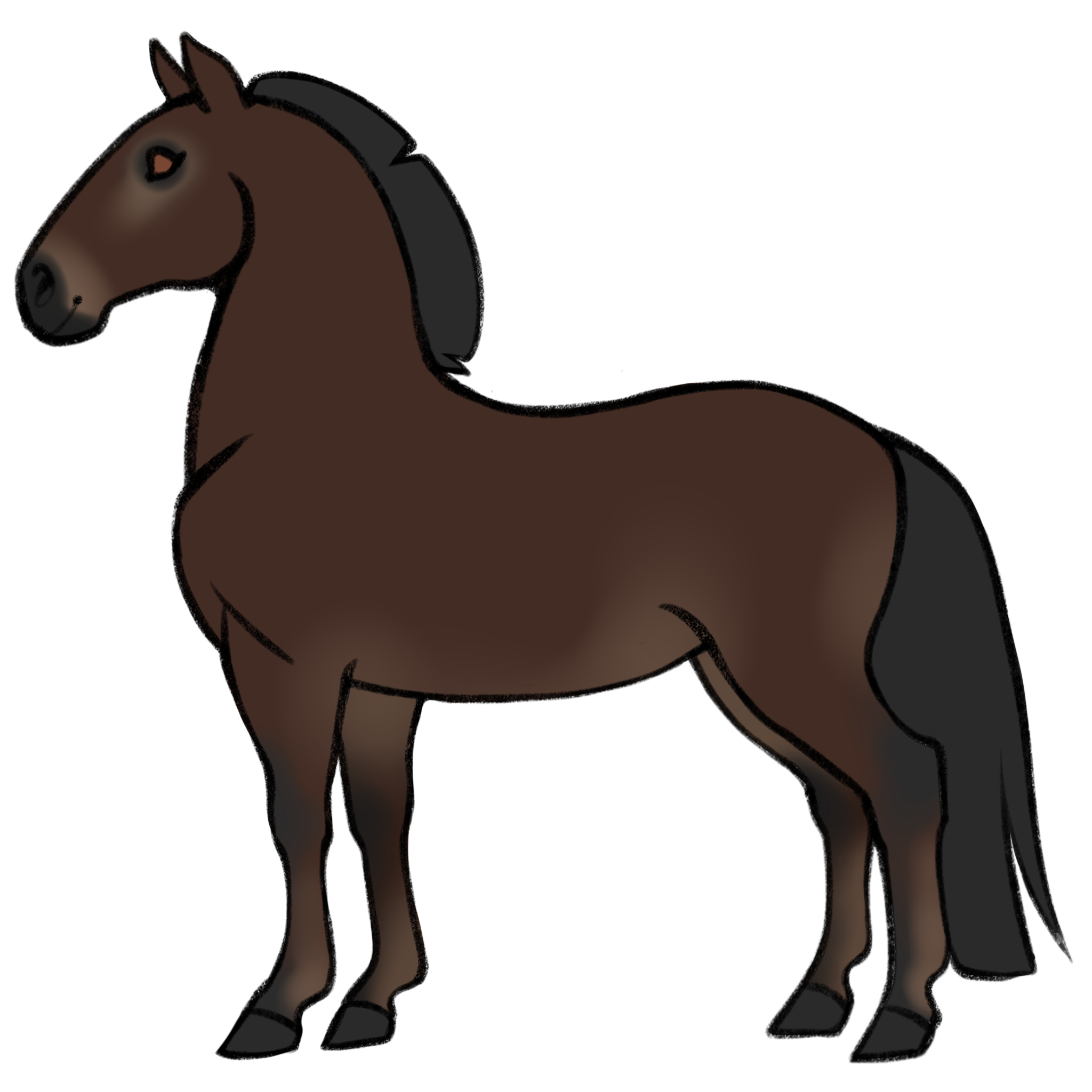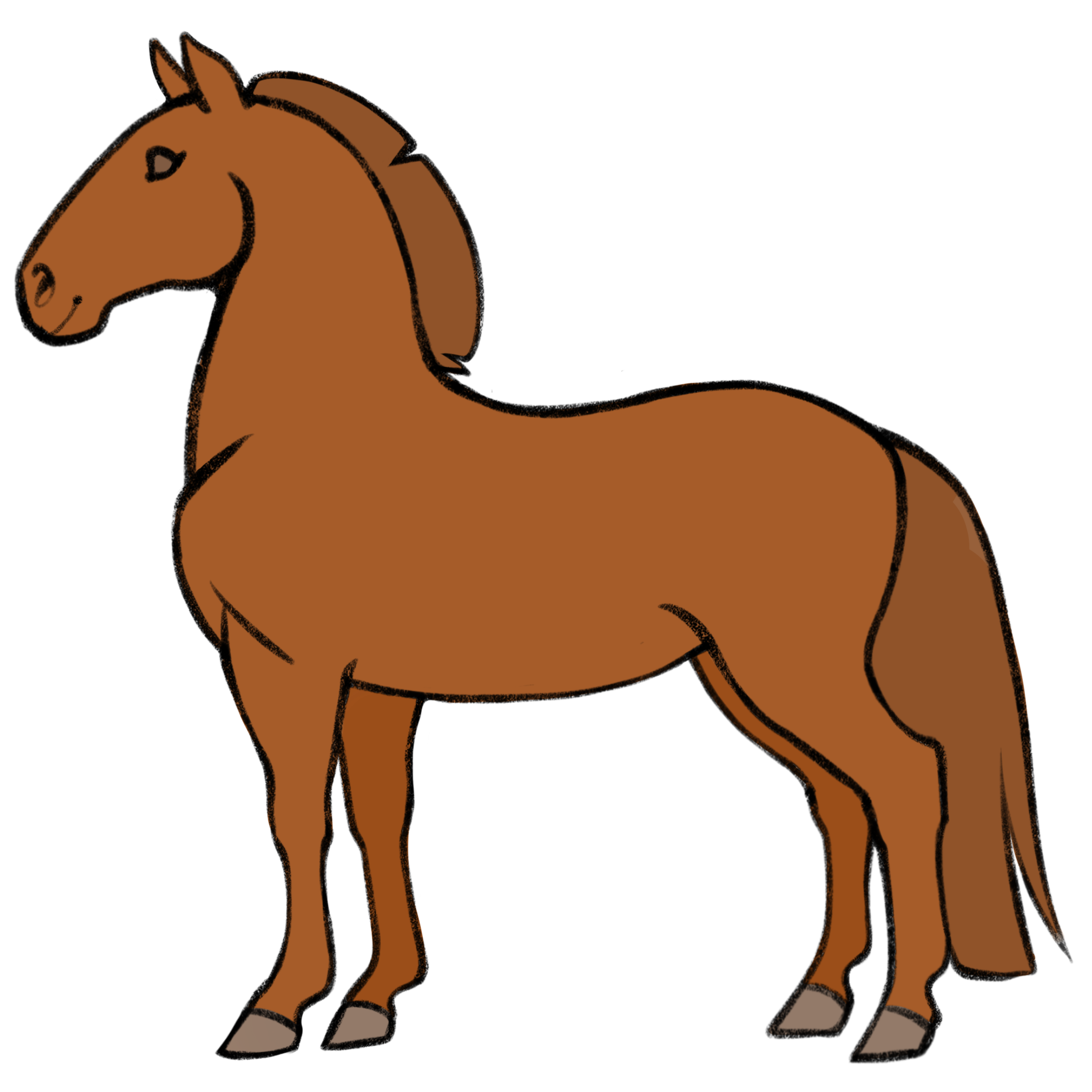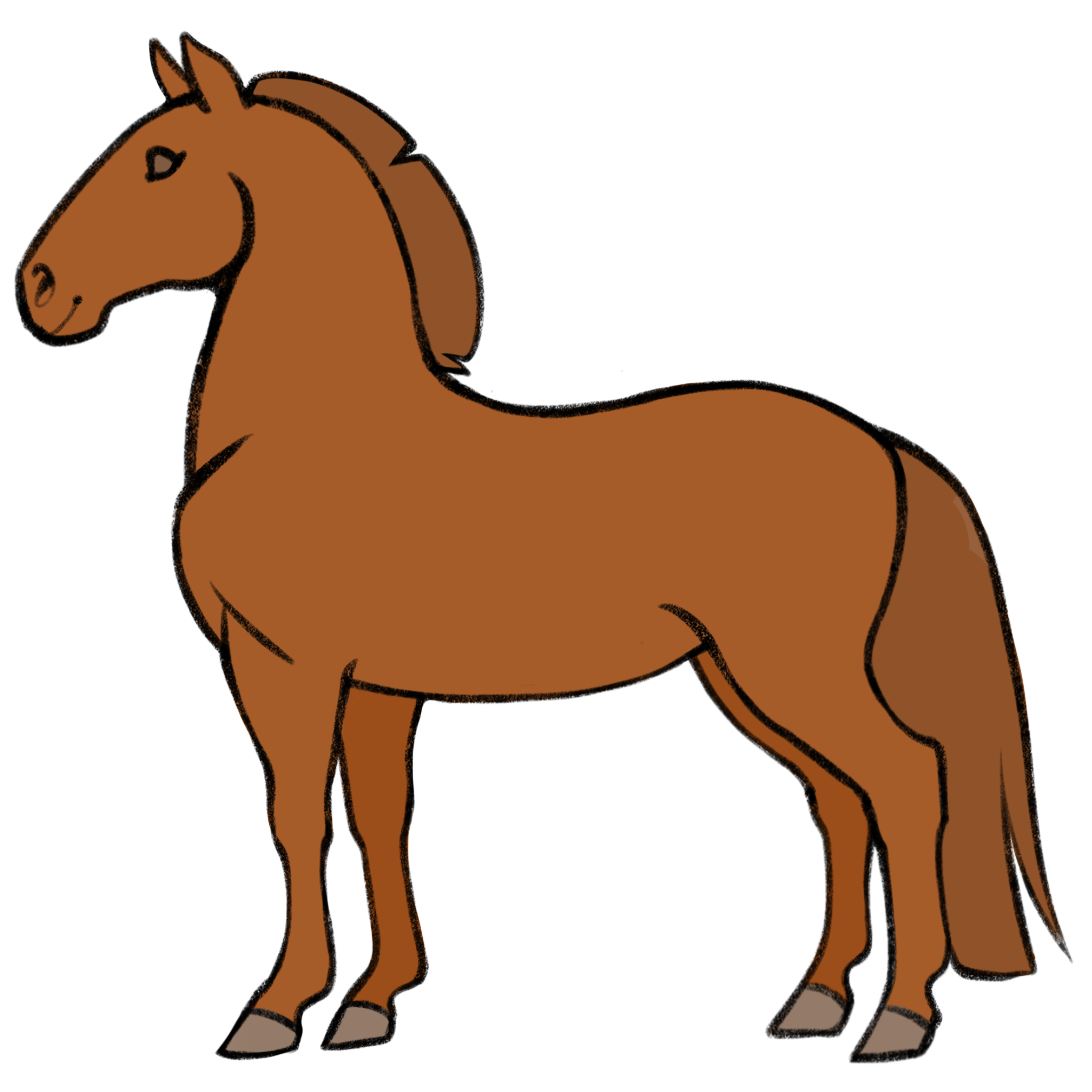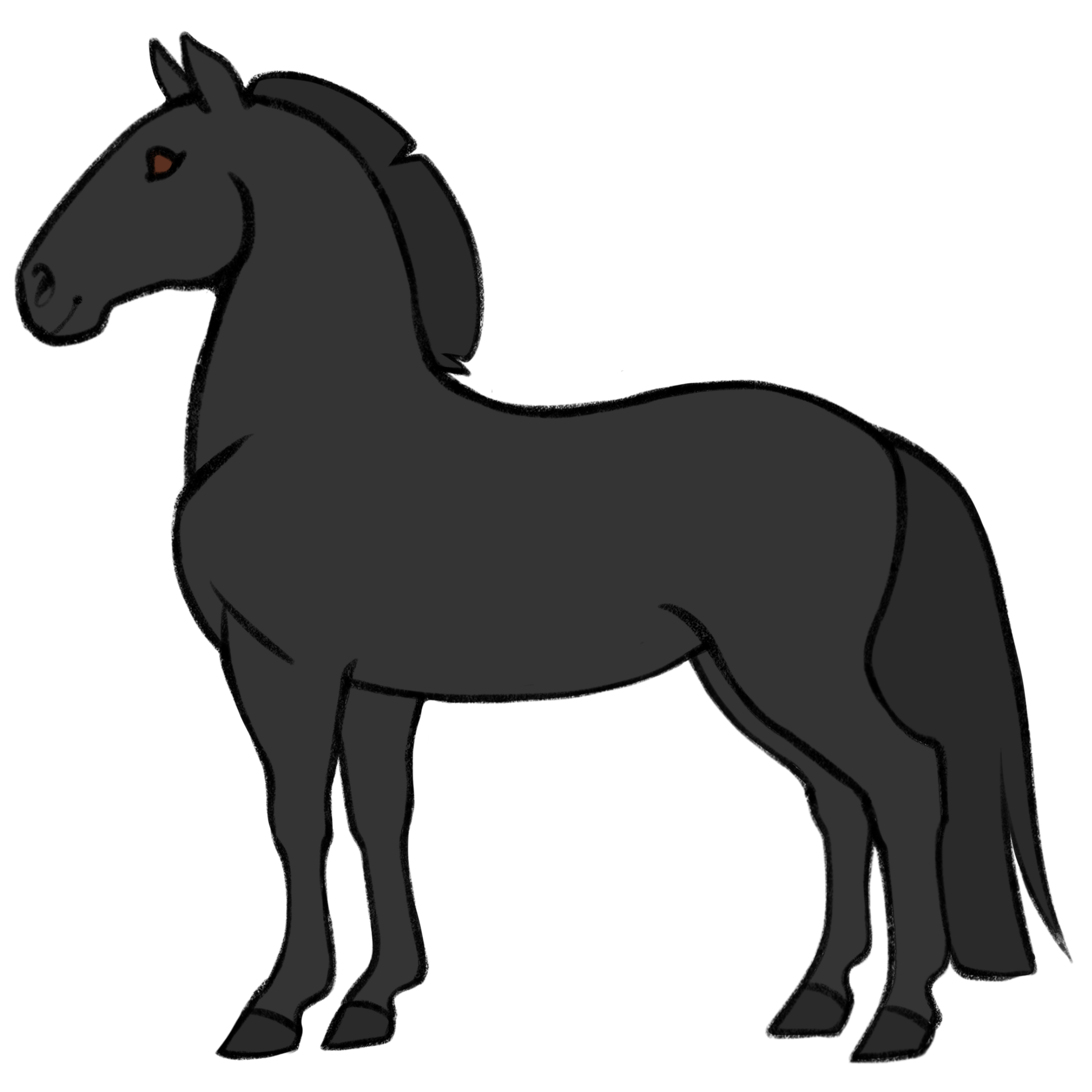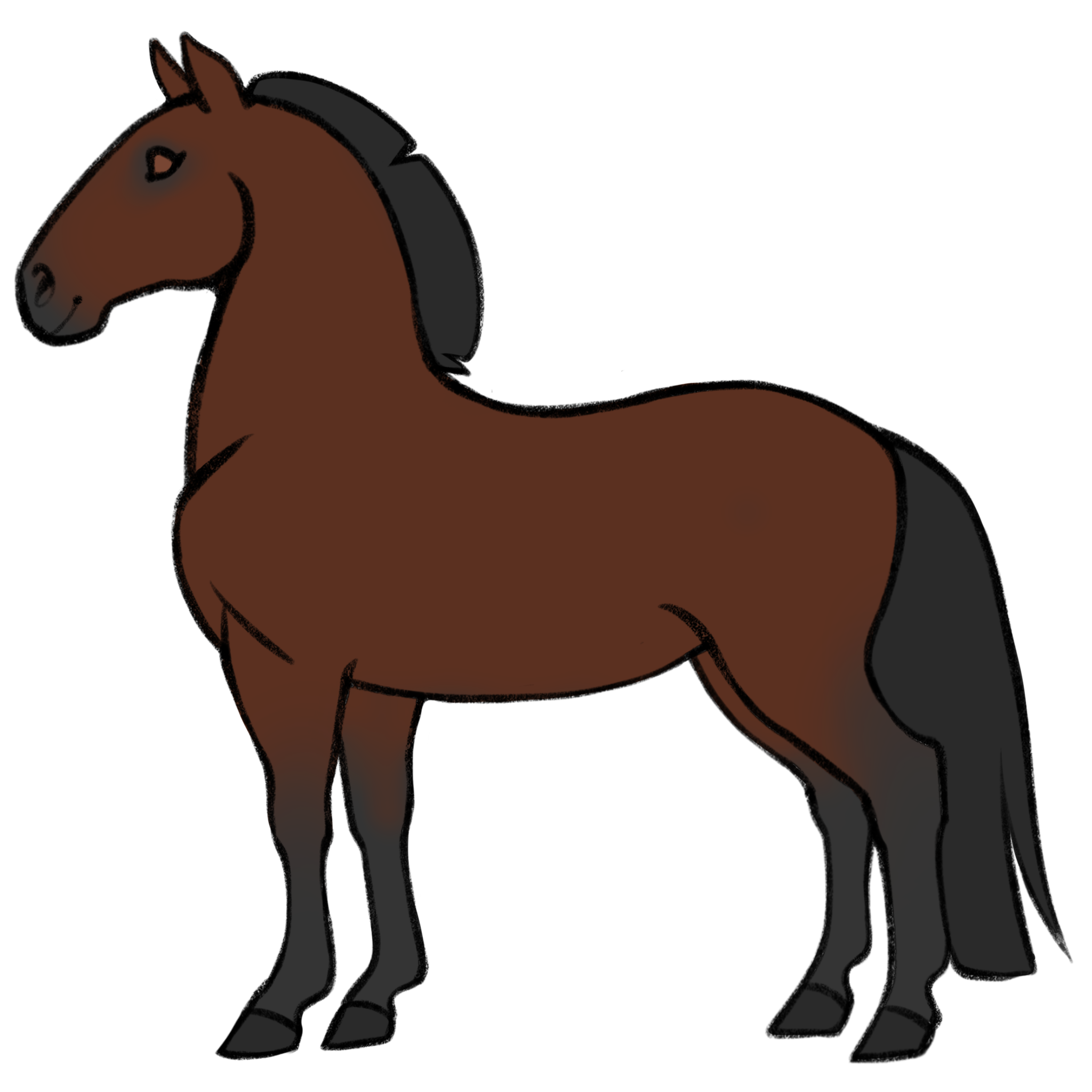Traits
(ee aa) chestnut, no agouti (Natural)
Name: Chestnut, No Agouti
Base Genotype: ee aa
Skin Color: Light
Eyes: Brown
Description: Chestnut, sometimes referred to as Sorrel or simply "Red" is the coat color that occurs when the horse carries no Eumelanin, which creates black pigment, and no Agouti, which restricts that black pigment to the mane, tail, and legs.
Like most base coats, intensity can vary. Chestnut ranges from a brassy ginger color all the way to "Liver Chestnut" - a dark, chocolatey brown.



(ee A_) chestnut, hidden agouti (Natural)
Name: Chestnut, Hidden Agouti
Base Genotype: ee A_
Skin Color: Light
Eyes: Brown
Description: Chestnut, sometimes referred to as Sorrel or simply "Red" is the coat color that occurs when the horse carries no Eumelanin, which creates black pigment. Additionally, the Agouti gene restricts that black pigment to the mane, tail, and legs- but since a chestnut horse has no Eumelanin (two e's), there is no way to tell if the horse is carrying a copy or two of Agouti. Therefore, these horses are agouti carriers and may have offspring that are able to show the Agouti gene. (These horses are usually bay.)
Like most base coats, intensity can vary. Chestnut ranges from a brassy ginger color all the way to "Liver Chestnut" - a dark, chocolatey brown.
The hidden Agouti gene does not impact the appearance of chestnut in any way.



(E_ aa) black (Natural)
Name: Black
Base Genotype: E_, aa
Skin Color: Dark
Eyes: Brown
Description: While some dark brown coats are mistaken for black, true black horses have coats that do not sunbleach or fade to brown. These horses typically have dark skin and brown eyes and a solid black coat that covers the entire body. Note that black horses have no copies of Agouti (they have two little a's, no big A's) since the Agouti gene would restrict the black pigment (E_) to the legs, mane, and tail- thus making a Bay horse instead of a Black horse.
When colorpicking for a solid black coat, it's required that the black is lighter than the black used for the lineart.
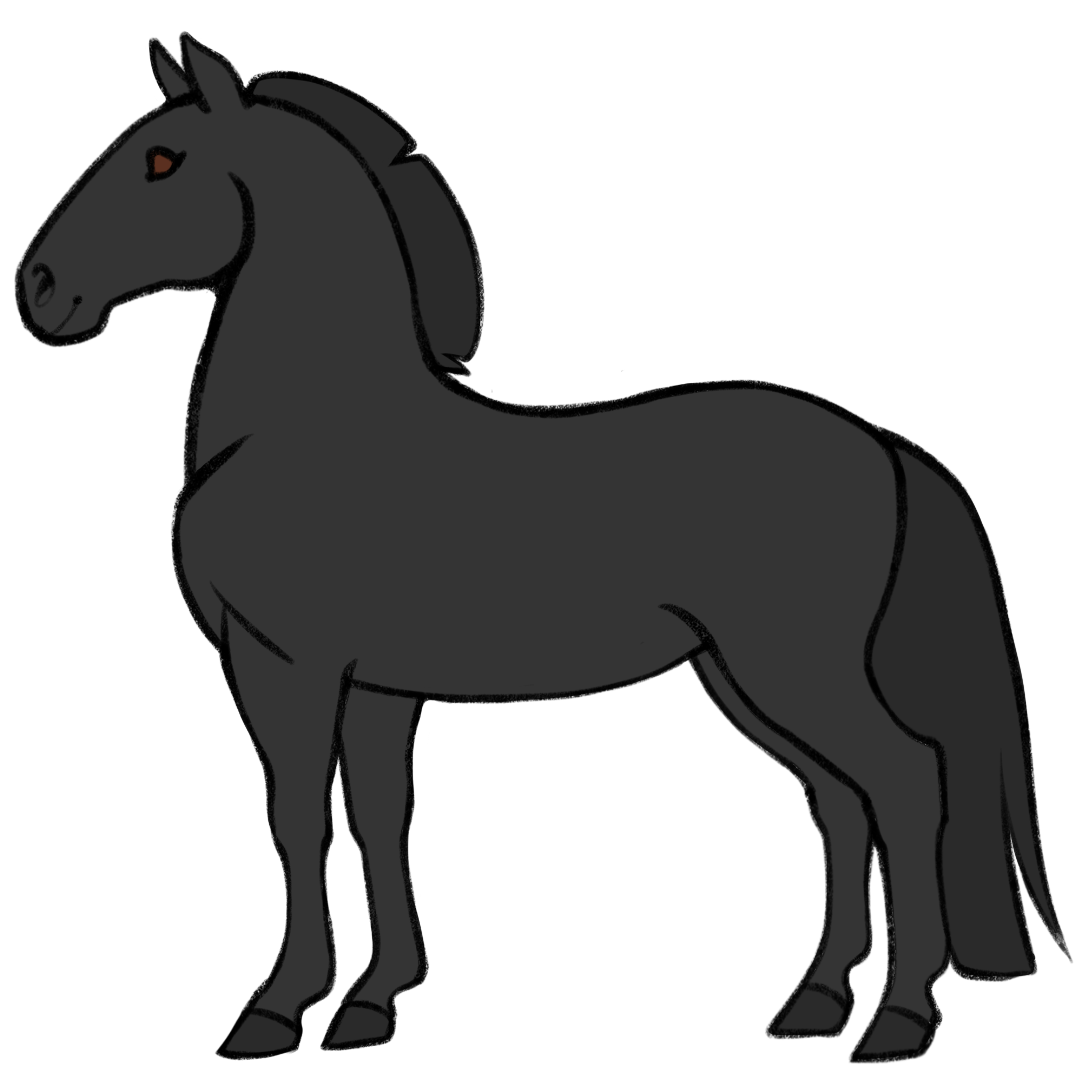
(E_ A_) bay (Natural)
Name: Bay
Base Genotype: E_, A_
Skin Color: Dark
Eyes: Brown
Description: The Bay coloration is requires that the horse is capable of producing black pigment (has at least one big E) and has the Agouti gene that restricts that black pigment to the mane, tail, and legs (has at least one big A). Bay horses have many variations in hue, such as "Bright" bays and "Blood" bays. There are also two optional variations of the Bay gene: "Brown" and "Wild" - these examples are shown below.
Design Guidance:
Horses that are eligible for bay coats can have a wide range of color available to them, ranging from a solid dark brown that could nearly be mistaken for black, to a bright wild bay that nearly looks dun. It's important not to clearly overlap those other colors. Blood bay horses should take care not to be so saturated as to look like an Ember Bay.
All examples below.
Standard Bay (E_, A_) Variations:
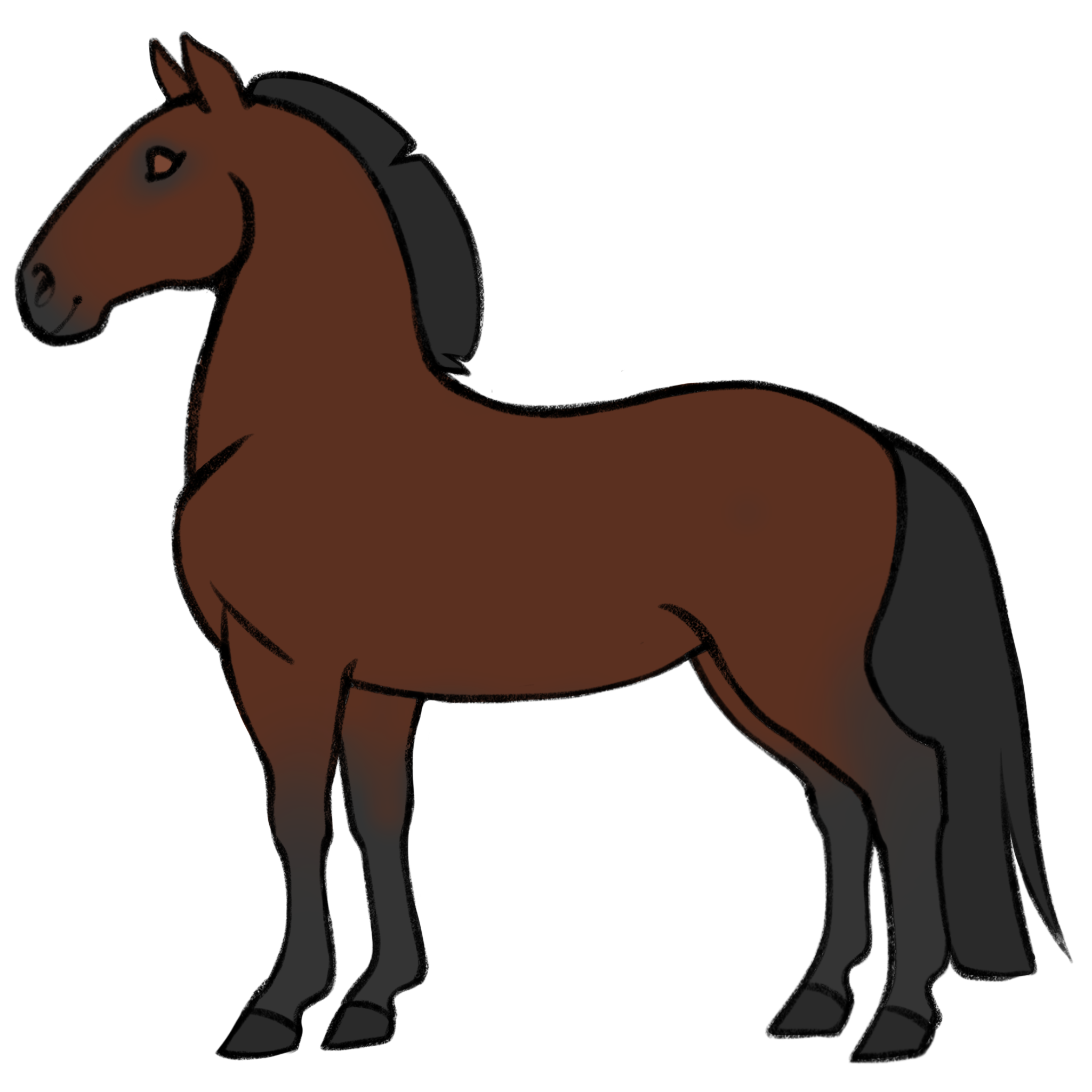
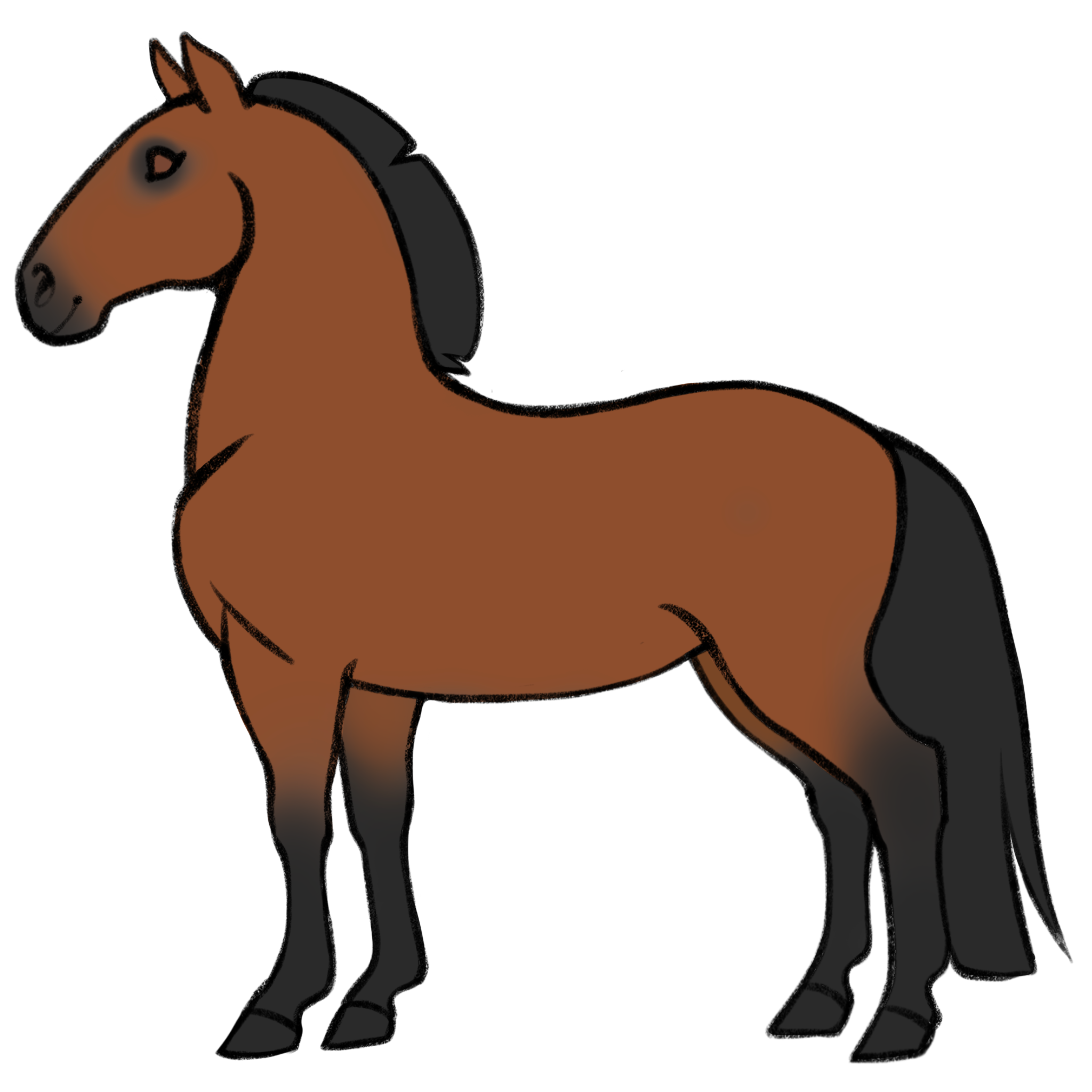
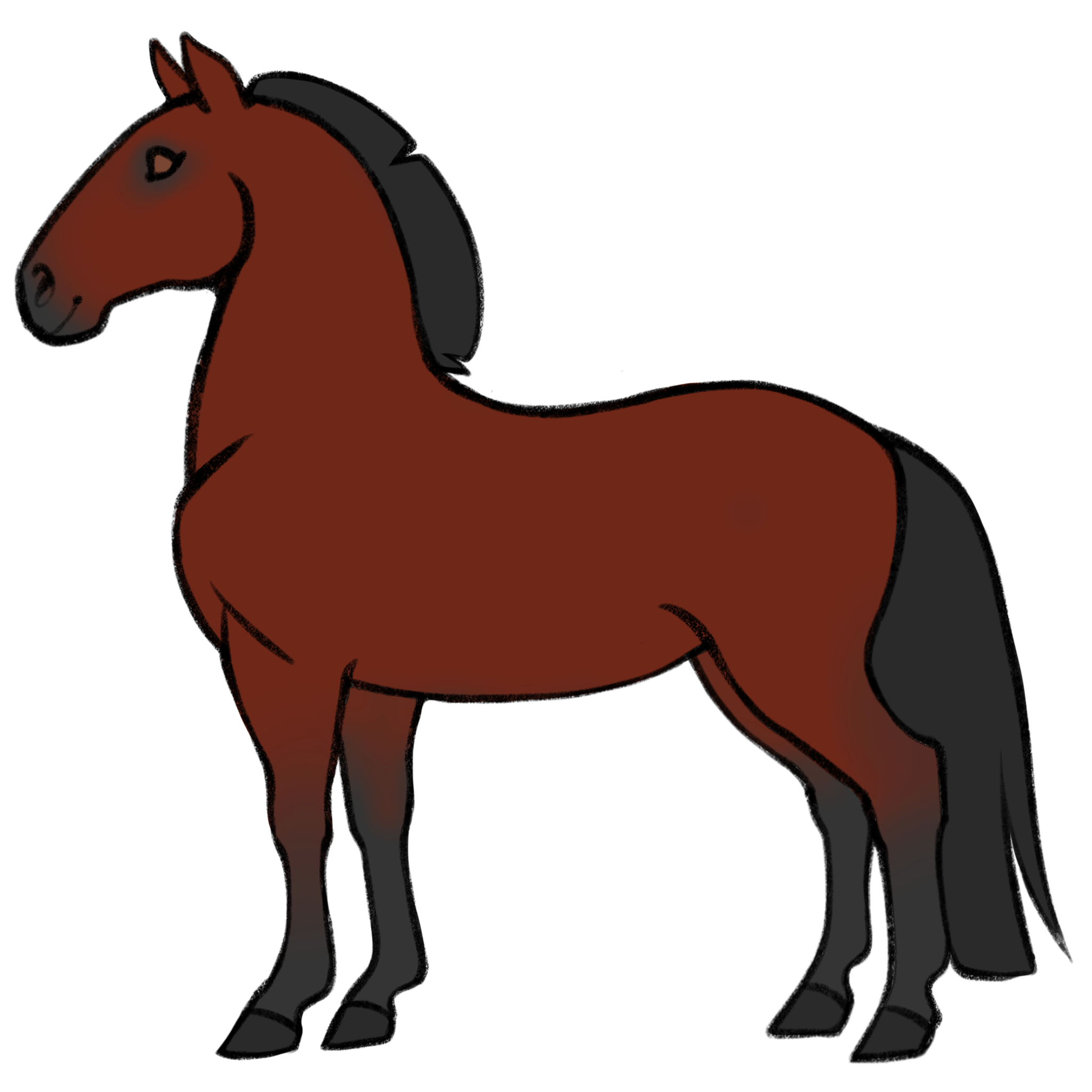
Brown (E_, At) Variation:
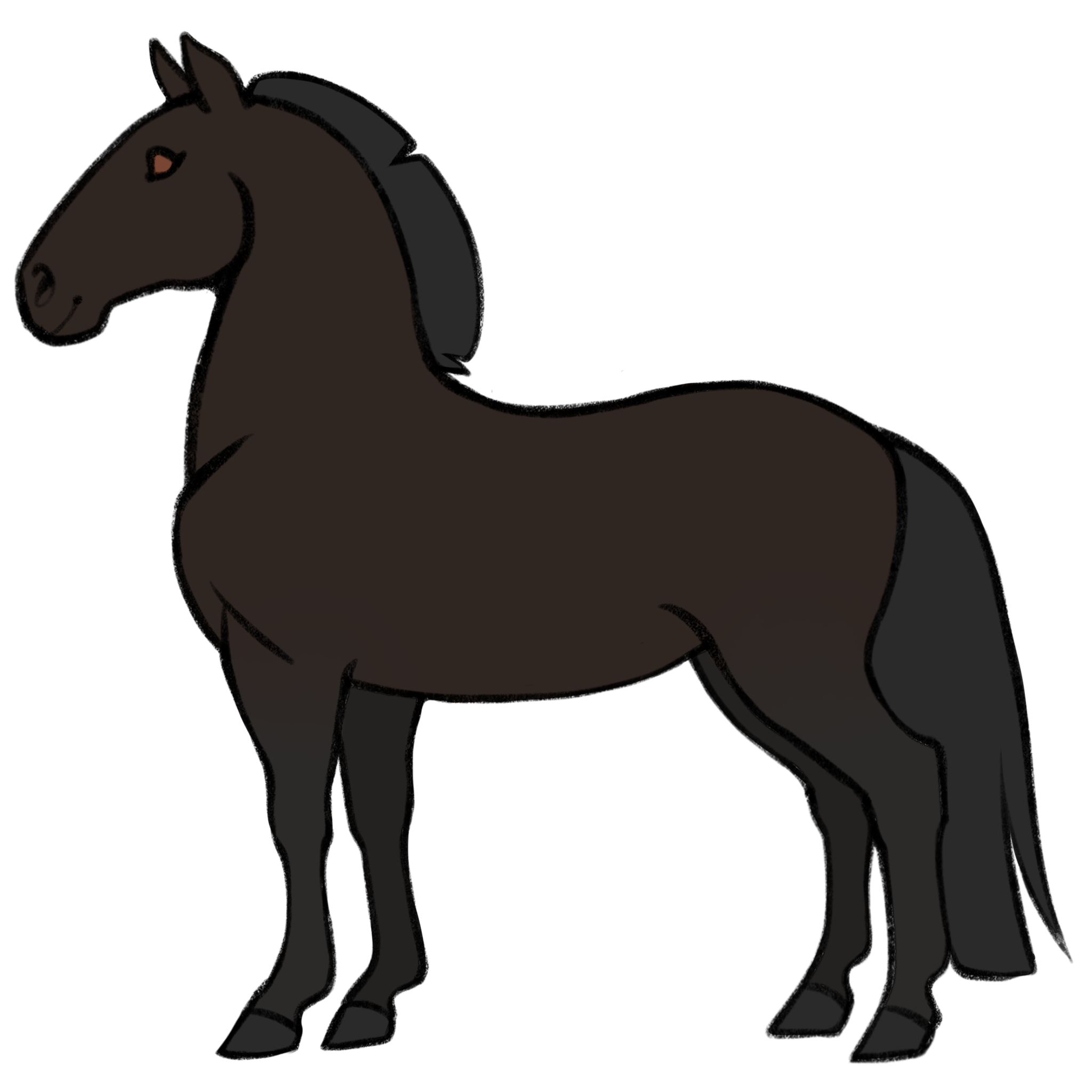
Wild Bay (E_, A+) Variations:
